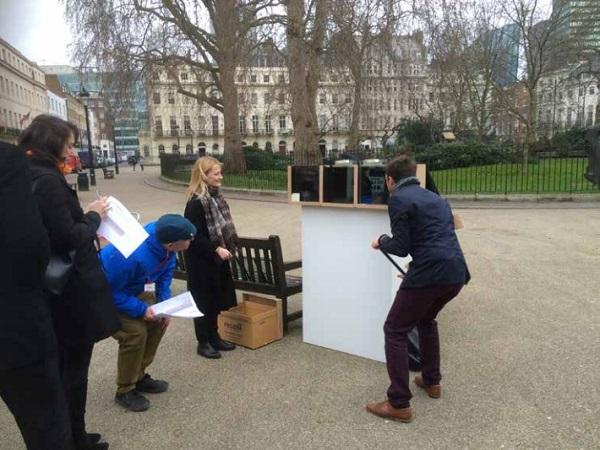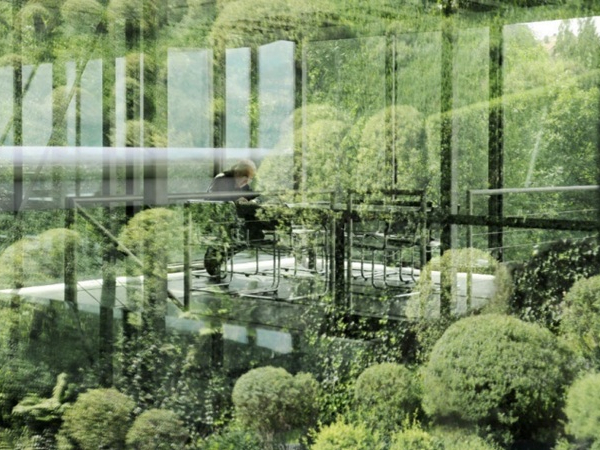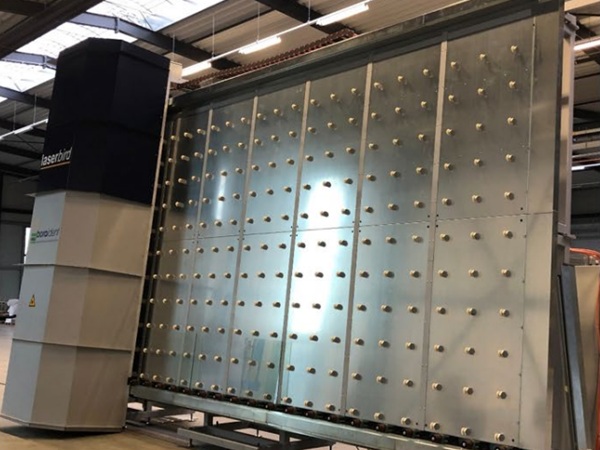First presented at GPD 2017
Abstract
The London property market has enjoyed a boom in construction since 2010 including many large developments of diverse typologies. There has been a broad trend over the past few years though has been towards a simplistic approach to glass specification and procurement. There are a few projects where more sophisticated latest glass products have been sought but more commonly glass is treated as a commodity.
However there is also a significant population of projects that aim to achieve glass that achieves a high performance, looks good and has an attractive visual quality. Over the same time available glass products have multiplied and sourcing has become globalised from numerous sources in numerous geographies. This expanded supply has provided both opportunity and competition.
However even though a wide range of products are available it is not unusual that developers, owners, designers and specifiers are disappointed with their glazing. This paper will explore some of the characteristics and drivers of this outcome and discuss how the glass industry and specifiers might play their parts and respond to give the customer what he wants.
Introduction
Over the past few years, since 2010, London has enjoyed a building boom seeing a large number of developments particularly in the residential and commercial office sectors. Over this period however glass supply has developed certain characteristics, but it still seems that it is very difficult for a buyer to purchase high performance process glass with certainty that the visual quality of the glass is also of a high standard. This paper asks why this is the case and what can be done to achieve high performance to a high visual quality.
Parts of the London construction market aim to achieve very high quality properties, but clients in these sectors find themselves frustrated with the visual quality of the glass that is supplied to their projects. They aim for glazing that achieves a high performance but is also transparent, has a good colour rendition and views and reflections are free of adverse distortions, but this is not typically achieved. Some particular issue are as follows:
• Poor reflections and flatness of reflections
• Distortions of view through and lack of transplarency and clarity
• Discolouration colour consistencyand Anisotropy
• Edge deletion
• Damage and scratches – which may be compliant to standards but are still considered defects by occupants
• Residual responsibility for any potential breaks due to critical NiS inclusions.
Glass specification in the London market
The wave of construction in London has seen large developments and a significant number of tall towers that have not previously been a characteristic of the London market. The scale of projects and the volume of development has resulted in a rapid expansion of construction activity pulling in suppliers and subcontractors from around the world. Although activity is tempered by Brexit there are still a lot of developments that are underway.
The range of residential developments range from the ultra-prime residential developments of Mayfair and Chelsea in central London, through large tower developments in places such as Battersea and Stratford to lower cost and affordable properties throughout the city. Typically these are private developments although housing associations account for a significant portion.
Similarly in the commercial sector there have been a number of iconic tower developments in and around the City of London and offices have also been developed throughout the central area of London and into places such as Kings Cross and Paddington. As the value of properties has increased so have expectations around the standard, quality, appearance and durability of the building increased.
For offices in the City of London and residential developments in the West End have increasing been described as “super prime” and sometimes “ultra-prime”. As a result many projects have high standards in response to the expectations of purchasers and tenants. These are investors who are paying for some of the most expensive properties in the world (or at least they were until the pound dropped post-Brexit) and as such it is difficult for them to accept anything substandard or imperfect.
When it comes to glass they will expect clear, undistorted views, good colour rendition and their property will need to look neat and crisp from the exterior. Reflections in glass therefore will also need to be crisp. Similarly the glazing will need to perform well. Regulations will drive the thermal performance and light transmission of the glass and overheating needs to be avoided through solar control coatings. Similarly glass will play its part in controlling noise from outside and will form part of a window with a good security rating. And, of course, although there have been large increases in the value of properties those funding the projects will naturally aim to limit construction costs.
Often these high expectations in a not insignificant portion of the London construction were often not realized. The complexity of the glass specifications certainly added to the issue but visual quality appears difficult for a client to specify for various reasons as discussed below. The result in these cases has been disappointment with the clarity and consistency of the view through the building, a lack of transparency, the presence of distorted reflections and liabilities related to the performance of the glass that the owners have to carry.
Before exploring these more carefully the context of these specifications and resulting work need to be put into context.
Typical Glass Procurement Practice
Given the scale and diversity of the London construction market there are a range of procurement models but the most common is described below used in this boom for projects in the central area.
Over the past few years the majority of projects have procured the building on a Design and Build model. In this the design responsibility for the whole project is passed to the main contractor at an appropriate stage. It is quite likely that the original design team (architects, engineers and specialists) will be novated to the main contractor to continue and finalise the design. Within this however some elements will be procured prescriptively, i.e. fully documented by the design consultants such as the structural concrete frame, whereas other elements will have a Contractor’s Design Process (CDP).
The latter is the most common model for the façade elements where the design consultants will prepare design intent drawings and a performance specification for the main contractor, and their specialist sub-contractors, to propose appropriate solutions, e.g. systems, materials, finishes and products, including glass panels. Therefore the contractors have quite an influence over the supply chain and how it is eventually managed.
Within this procurement chain the glass will most typically be specified either within the façade performance specification by a specialist façade consultant or a section L40 of the UK National Building Specification system. This specification would most typically be used by either a sub-contractor responsible for the entire building facade or if there are several then the supplier and installer of the windows and other glazing elements. As a result there are a number of parties that sit between the client and the glass processor. There are good reasons for this but all of these layers potentially add complexity and inhibit flexibility in the response to tenders.
One other aspect of recent procurement arrangements in central London has been the proliferation of PCSA (Pre-Construction Services Agreement) engagements also known as two stage tenders. Under these the main contractor and in some cases the sub-contractor are engaged independently during the project’s detailed design stage, or Stage 4 under the RIBA Plan of Work 2013, to provide advice on the construction aspects of the project, to give them an early mobilization and in the case of the façade sub-contractor prepare their proposed details.
Typically competitive tenders are used to select the PCSA (sub-)contractor including an estimate of the value of the main contract or sub-contract package. Later as the design develops the commercial aspects are refined, leading to a negotiated final price. Although there is the option for the client to then take the design to the market this is rarely the case. If the PCSA is well planned then the façade subcontractors services can include firming up their proposed supply chain, including the source of the glass and samples and visual mock-ups can be prepared as part of the scope. This approach may be used by a team aiming to reach a higher quality standard or an unusual glass composition.
Process for Better Glass
Where the project’s ambition requires or very high standards are expected the project team may try to take particular measures to achieve glass of good quality. As alluded to above samples and visual mock-ups will feature in this approach, but before these can be procured the detailed specification of the glass needs to be determined.
Standard glass samples 300mmx200/300mm are commonly used to assess clarity, tone and reflectivity of glass build-ups through the design stages of projects. On some projects viewing boxes are used to allow the project team to assess differences between samples in open air spaces whilst also modelling the inside to outside aspects of the glass.
Although representative these samples are too small to be tempered.
Visual mock-ups are also a key factor. In these fully processed, full sized glass units can be viewed in context of the proposed façade and the expected appearance reviewed by the client and the design team. If there is an open book approach to the cost of glass with the sub-contractor then different products from a range of suppliers can be compared for their visual quality. Selection however can only be made on what is presented. Client teams at that point will then wish to set these panels as control samples for visual quality.
This may or, more likely, may not be accepted by the subcontractor or main contractor as there will be no associated commitment from the glass processor to maintain this visual standard. The glass viewed is likely to fall well inside of the flatness tolerances and therefore may not be representative of the full range of production. For an enhanced project though the client team through specifications will aim to tighten the various dimensional, appearance and flatness criteria to control the appearance of the glass. These may or may not survive the tendering process and will most likely be challenged by all parties in the supply chain, who by contrast will aim to adhere to standards and industry norms.
Drivers behind around the issue
Different players with the supply chain each have drivers that make the specification and procurement of performance glass with a high visual quality difficult.
Clients
• Maintaining a competitive situation, leads avoiding specification of a sole supplier, avoiding changes to the specification after the award of tender, avoid situations that lead to poor negotiating positions
• Budget certainty as soon as possible, leads to using PCSA to obtain early budgets, require well defined tender documents, desire to lock in prices at an early stage
• Aim to transfers various risks to contractor that will include design, selection of materials, responsibility for workmanship
• Compliant with regulations and planning requirements – to avoid compromising the value of the development.
• Demonstrable compliance with standards and property market specification for space being constructed e.g. BCO, NHBC, etc. to position the development in the market sector
• Low maintenance in service which in relation to glass means that specification target avoiding occupant complaints, deterioration and breaks in service
Architects (and these issues are also those of the clients)
• Aesthetics and standard of finish – these project the image of the development and allow it to achieve its potential returns
• Consistency of appearance
• Weathering
Main contractors and sub-contractors
• Working to maximize returns within the agreed price and finding opportunities to provide more to the project.
• Minimising risk and uncertainty generating a risk adverse culture that minimizes loose ends, avoid tests and other activities that are difficult to control, avoid subjective assessments and criteria, control the location and extent of VMU, minimising production / value add completed at risk, avoid fitness for purpose requirements
Glass processing industry
• Avoidance of customization
• Improve efficiency of production and minimize wastage and potential for rejection of product.
• Speed and simplicity of production
• Limited responsibility and limit the extent of warranties.
• Reliance on standards and industry norms that they are confident that their production can meet.
Outcome
Given the typical behaviours of different players in the supply chain as mentioned above even when the client and their design team are seeking to specify glass to a higher standard it is subverted in various ways. To control risk main contractors and sub-contractors will often seek to supoply glass that is merely compliant with the relevant codes.
These codes take a long time to produce and update and as they are developed by code committess comprising of all players in the industry the glass suppliers have a big influence to see that the standards set are not too challenging for their industry.
To overcome the limitations or the lack of coverage of local codes facade consultants will include references and elements of other international standards, but this can end in confusion as within one national sysetm the codes will cross refer making a mixutre of codes difficult to manage. For instance ASTM glass codes allow different tolerances in glass thickness compared to Euro Norms making references to different codes potentially invalid.
Codes are supplemented by industry guides and standards, but these are often generated by one side of the industry and may not have universal acceptance. This can be further complicated where glass processors are based overseas and therefore propose that their products follow their local codes and industry standards rather than those set our in the specification.
Finally many codes have only limited controls on visual aspects of glass, leaving some phenomena undefined. Also definitions can be ambiguous and the various criteria apply to each process in turn. As a result the cumulative effect of different impacts on the visual aspects of the glass units are not controlled or defined by the standards. And the codes only apply to units at the time of production and do not neceassarily apply to the as installed or in service condition. As a result currently there are no standards that can be adopted where higher standards are sought.
The Way Forward
As noted above it would appear straight forward that the client’s should be able to procure what they want, i.e. high performance glass with a high visual quality, but for the reasons discussed above there are barriers. So how can the industry respond to cut through the issues?
A mixture of approaches can be envisaged that will probably have to work in tandem to unlock the problem. Essentially suppliers need the following:
• A clear definition of the requirements – how to define the various aspects of high visual quality?
• Agreed methods of measurement aligned to the definitions of visual quality
• A capability to control and avoid distortions during each of the glass processing stages
• Appropriate control and checks of visual quality that can be completed on the production line to avoid glass being returned.
If these can be addressed then suppliers, and those above them in the supply chain may have confidence that the required standard can be achieved.
Appropriate standards and definitions appears to be key. Subjective criteria are problematic and the only available standards are very broad and do not define the higher quality product that clients are seeking. Glass processors are targeting standards that easily exceed the established dimensional / flatness criteria, mainly to avoid returns, but these standards can sold to the client due to a lack of definition.
One step forward would be an industry definition of higher visual quality glass. This would need to define either dimensional (measureable) criteria for flatness, thicknesses and other aspects that impact images viewed through or reflected by the glass. And these standards would need to apply to the completed glass unit rather than each individual process to avoid the accumulation of distortions within a unit.
The alternative to dimensional criteria would be optical standards. These have been discussed within the industry for many years but are not being taken up. Are the barriers the complexity of the criteria or the need for the industry to invest in new measuring methods?
Is it that methods for measuring glass are evolving quickly and no new methods can be established before an alternative is proposed? Clearly as the issues are generally related to visual aspects direct measurement of a distorted glass appears the best approach. If this was adopted then there would have to be investment by suppliers and education of all those parties within the supply chain.
As mentioned measurement methods are evolving as new equipment and perhaps more importantly sensors and ways of processing the data are available. Two particular technologies come to mind. Laser pin point surveys could be used to precisely map the surface of the glass to determine its shape. These results could be quickly assessed by software predicting the visual characteristics of the glass. Alternatively glass could pass in front of a viewing box with say a zebra board so a visual scanner can determine the degree of distortions to view through the glass.
Introducing a new step in the production sequence to measure the quality of the glass will impact production rates and also result in glass being downgraded and potentially destroyed.
This raises an alternative strategy formed on the basis that the visual quality of glass cannot be controlled. In which case it needs to be managed in ways that naturally variable materials such as stone are handled, i.e. panels are in assessed, perhaps subjectively, for visual acceptability against a set of control samples. The panels are then either set a position on the façade or are graded and potentially scrapped if they do not meet the particular criteria of the locations. In addition to the cost of wasted units it would also be burdensome to manage especially on projects where repetition of sizes is low.
Behind all of these techniques is the ability of the glass processing industry to rise to the challenge. If wonderfully flat, undistorted insulated glass units could be produced without any compromise in performance then this would be a dead issue. But at the moment the way forward is unclear. Glass processing equipment is continuing to evolve and incorporate increasing numbers of controls and sensors that can adjust settings to give more reliable products.
We may not be far from a point where enough of the industry has confidence for instance to halve the roller wave criteria established in codes for tempered glass around the world. Unfortunately at the moment there is no incentive for the industry to revise these specifications, but as discussed above this results in clients and specifiers being unable to procure glass to tighter tolerances. As noted above if a premium could be charged for glass produced to tighter tolerances then a change may occur.









